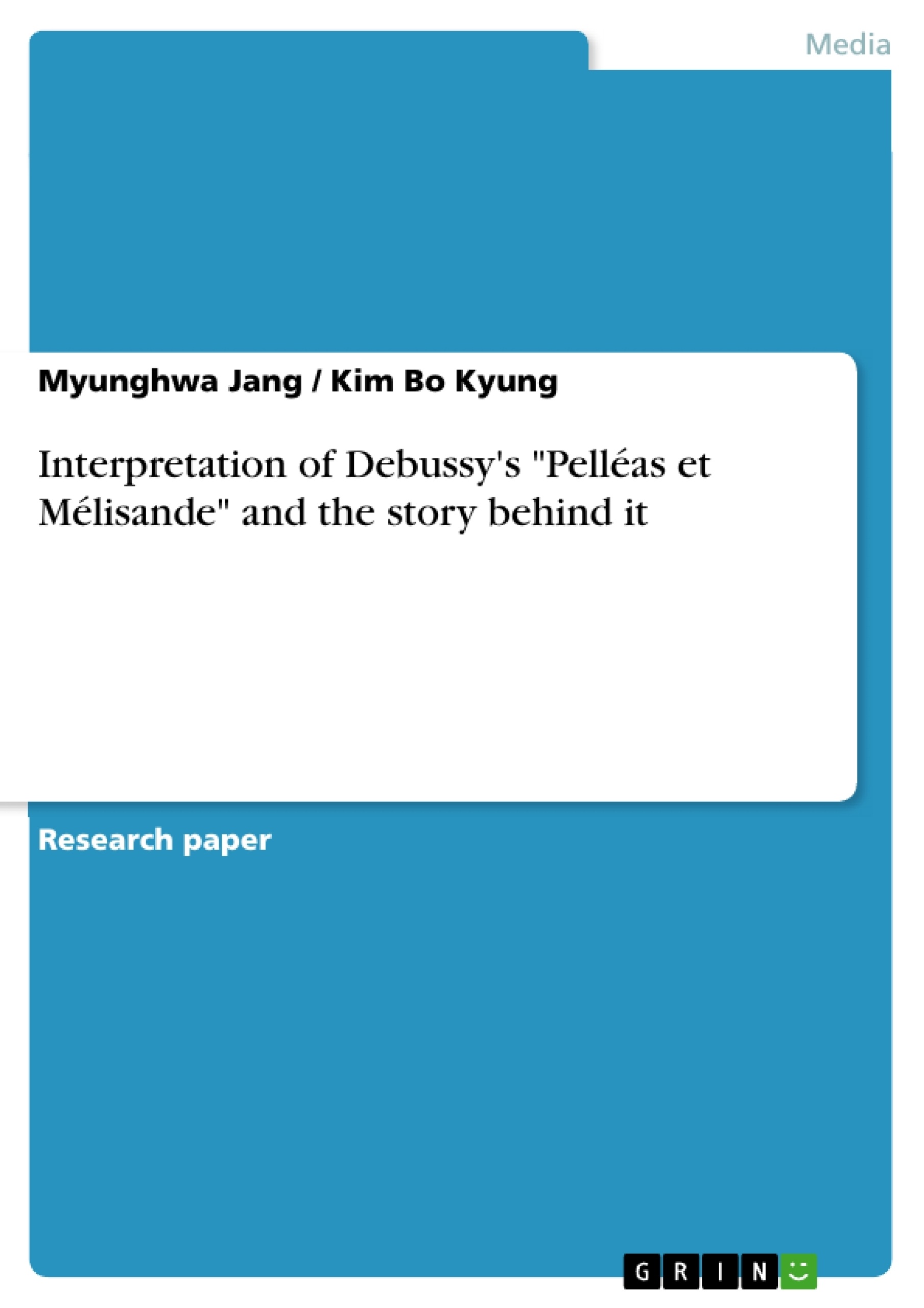In the world of music, Claude Debussy became the foremost composer of the new musical impressionism. His aim was to express “the inexpressible,” in a manner that would ultimately reinvent music drama as “drama in music.” Through his only completed opera, Pelléas et Mélisande, Debussy created a new technique designed to “convey the état d’âme of the characters and the maze of unconscious conflicts between them.”
Debussy chose to set the poetry of Materlinck’s drama, Pelléas et Mélisande, possibly because of the importance of nature within the drama, a quality that appealed to both artists’ impressionist in expressing the changing aspects of nature, especially of light. Debussy began composition on the work in August 1893, starting with the climactic love scene in the fourth act. Throughout the process of composition, Debussy worked to create a new original technique away from the prevailing contemporary German and Italian style, although he found it difficult to fight the influence of Wagner.
The general subdued character of Debussy’s score is evident due to its subtlety, restraint, and understatement, resulting from his radically revised approach to text-setting and employment of the orchestra. The use of aria and recitative in their conventional forms is abandoned. Debussy’s vocal line carries the text in long, soft declamation that sets one syllable to one note.
Table of Contents
- 1. From play to Opera
- 1. From act I to act V
Objectives and Key Themes
This text delves into the interpretation of Debussy's opera, Pelléas et Mélisande, and explores the interplay between the opera and the play by Maurice Maeterlinck that inspired it. The author analyzes the key elements of the opera, including its thematic structure, character development, and musical motifs, while examining the influence of the play on Debussy's creative process.
- The dominance of fate and its impact on the characters' actions and choices.
- The contrast between light and darkness as symbolic representations of life and death.
- The development of character motifs through musical themes and their role in conveying emotions and actions.
- The influence of Maeterlinck's play on Debussy's creative process and the adaptation of its themes and characters into an operatic format.
- The connection between the characters' actions and the symbolic meaning of the opera's setting, such as the castle and the forest.
Chapter Summaries
The first chapter, "From play to Opera," examines the origins of Pelléas et Mélisande, tracing its journey from Maeterlinck's play to Debussy's musical interpretation. The author explores the themes of fate and the power of destiny in both the play and the opera, highlighting the contrasting perspectives of Golaud and Mélisande. The chapter further delves into Debussy's creative process, emphasizing his desire for a text that allowed for a more suggestive and nuanced approach to storytelling.
The second chapter, "From act I to act V," explores the dramatic structure of the opera, analyzing the significance of each act and its key scenes. The chapter examines the use of light and darkness as symbols within the opera, particularly in relation to Mélisande's character. It also delves into the development of musical motifs for characters such as Golaud and Mélisande, showcasing their distinct rhythmic and melodic characteristics.
Keywords
The key themes and concepts explored in this text include the opera Pelléas et Mélisande, Maurice Maeterlinck's play, Claude Debussy's composition, fate and destiny, symbolism, light and darkness, character motifs, musical themes, and the relationship between opera and dramatic literature.
- Quote paper
- Full time Lecturer in Voice Myunghwa Jang (Author), Kim Bo Kyung (Author), 2012, Interpretation of Debussy's "Pelléas et Mélisande" and the story behind it, Munich, GRIN Verlag, https://www.grin.com/document/190260




